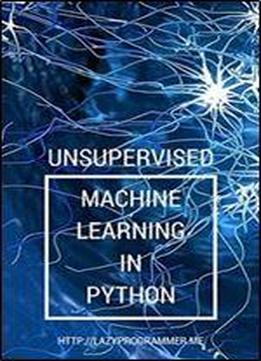
Unsupervised Machine Learning In Python: Master Data Science And Machine Learning With Cluster Analysis, Gaussian Mixture Models, And Principal Components Analysis
by Lazyprogrammer /
2016 / English / EPUB
1.3 MB Download
In a real-world environment, you can imagine that a robot or an artificial intelligence wont always have access to the optimal answer, or maybe there isnt an optimal correct answer. Youd want that robot to be able to explore the world on its own, and learn things just by looking for patterns.
Think about the large amounts of data being collected today, by the likes of the NSA, Google, and other organizations. No human could possibly sift through all that data manually. It was reported recently in the Washington Post and Wall Street Journal that the National Security Agency collects so much surveillance data, it is no longer effective.
Could automated pattern discovery solve this problem?
Do you ever wonder how we get the data that we use in our supervised machine learning algorithms?
Kaggle always seems to provide us with a nice CSV, complete with Xs and corresponding Ys.
If you havent been involved in acquiring data yourself, you might not have thought about this, but someone has to make this data!
A lot of the time this involves manual labor. Sometimes, you dont have access to the correct information or it is infeasible or costly to acquire.
You still want to have some idea of the structure of the data.
This is where unsupervised machine learning comes into play.
In this book we are first going to talk about clustering. This is where instead of training on labels, we try to create our own labels. Well do this by grouping together data that looks alike.
The 2 methods of clustering well talk about: k-means clustering and hierarchical clustering.
Next, because in machine learning we like to talk about probability distributions, well go into Gaussian mixture models and kernel density estimation, where we talk about how to learn the probability distribution of a set of data.
One ting fact is that under certain conditions, Gaussian mixture models and k-means clustering are exactly the same! Well prove how this is the case.
Lastly, well look at the theory behind principal components analysis or PCA. PCA has many useful applications: visualization, dimensionality reduction, denoising, and de-correlation. You will see how it allows us to take a different perspective on latent variables, which first appear when we talk about k-means clustering and GMMs.
All the algorithms well talk about in this course are staples in machine learning and data science, so if you want to know how to automatically find patterns in your data with data mining and pattern extraction, without needing someone to put in manual work to label that











